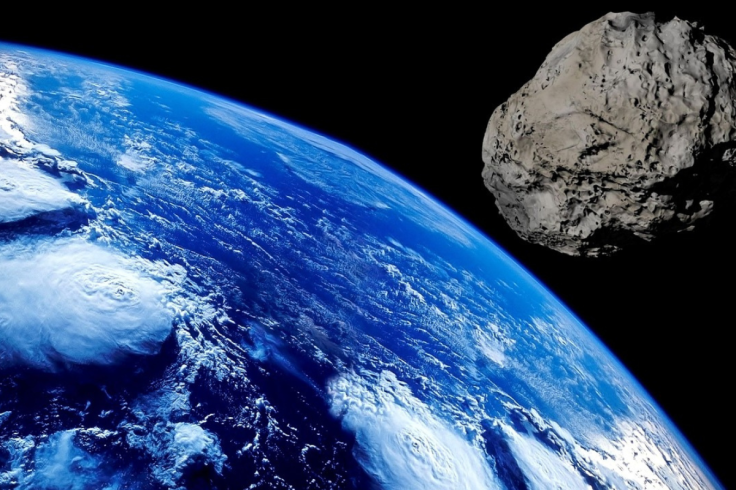New 3I/ATLAS Theory Sparks Controversy — Scientists Push Back, Urge Evidence Over Conspiracies
New 3I/ATLAS theory sparks controversy as scientists urge evidence over conspiracies

A fresh wave of conspiracy theories surrounding the interstellar object 3I/ATLAS has prompted astronomers to issue public warnings about the spread of misinformation.
The comet, only the third interstellar visitor ever detected, has become the focus of escalating online speculation after stylised images circulating on social platforms suggested it could be an extraterrestrial spacecraft.
Scientists, however, say every observation to date confirms 3I/ATLAS is a natural comet and argue that sensational claims risk drowning out real scientific discovery.
Viral Claims Spark Debate
The controversy began after stylised images of 3I/ATLAS circulated on social media, depicting the comet as a metallic, spacecraft-like body. Posts on platforms such as X and Instagram suggested the images were leaked photographs, prompting widespread speculation about extraterrestrial origins.
Astronomers quickly dismissed the claims, pointing to official observations from the Hubble Space Telescope, which captured 3I/ATLAS in July 2025. The images showed a teardrop-shaped dust cocoon surrounding an icy nucleus, consistent with natural cometary activity. NASA confirmed the comet would come no closer than 270 million kilometres to Earth, refuting suggestions of a threat.
Avi Loeb's Controversial Theory
Harvard astronomer Professor Avi Loeb, known for his provocative ideas, reignited debate by suggesting that 3I/ATLAS could be extraterrestrial technology. Loeb argued that unusual behaviour, including rapid brightening as the comet approached the Sun, warranted consideration of non-natural explanations.
Speaking to The Times of Israel, Loeb warned against dismissing unconventional theories outright, citing past intelligence failures as examples of the consequences of ignoring unlikely scenarios. He claimed the comet, estimated to be one or two city blocks wide, could pose a potential threat to humanity if misunderstood.
NASA, however, rejected Loeb's claims, stating that all available data pointed to a natural cometary origin.
Scientists Urge Evidence Over Conspiracies
Mainstream astronomers have urged caution, stressing that extraordinary claims require extraordinary evidence. Researchers emphasise that every piece of data collected so far, from Hubble, Gemini South, and ground-based observatories, is consistent with 3I/ATLAS being a comet.
Michelle Starr, writing for ScienceAlert, noted that while 3I/ATLAS is unusual in its composition, with higher levels of nickel and carbon than typical comets, this does not imply artificial origins. 'Every piece of evidence collected about 3I/ATLAS to date is consistent with a natural, cometary origin – a highly weird comet, to be sure, but a comet nevertheless,' she explained.
Astronomers argue that promoting conspiracy theories undermines public trust in science and distracts from the genuine excitement of studying interstellar material.
Allegations Against NASA
Adding to the controversy, some outlets accused NASA of withholding high-resolution images of 3I/ATLAS. Reports in IBTimes suggested the agency concealed data, fuelling speculation about what it knows. NASA has not commented directly on the allegations, but scientists insist that all publicly available images show clear cometary features.
Why 3I/ATLAS Matters
Despite the noise, astronomers highlight the genuine scientific importance of 3I/ATLAS. As only the third interstellar object detected, after 'Oumuamua in 2017 and 2I/Borisov in 2019, it offers rare insights into planetary formation beyond our solar system.
Studying its composition allows scientists to compare material from other star systems with comets formed around the Sun. This could help answer fundamental questions about whether the processes that shaped our solar system are standard across the galaxy.
The debate over 3I/ATLAS illustrates the tension between scientific inquiry and public fascination with extraterrestrial theories. While figures like Avi Loeb argue for keeping an open mind, mainstream astronomers stress the need for evidence and caution against conspiracies.
As Hubble and other observatories continue to monitor the comet, scientists remain confident that 3I/ATLAS is a natural, if unusual, interstellar comet. For the public, the challenge lies in distinguishing between credible science and viral speculation.
© Copyright IBTimes 2025. All rights reserved.




















